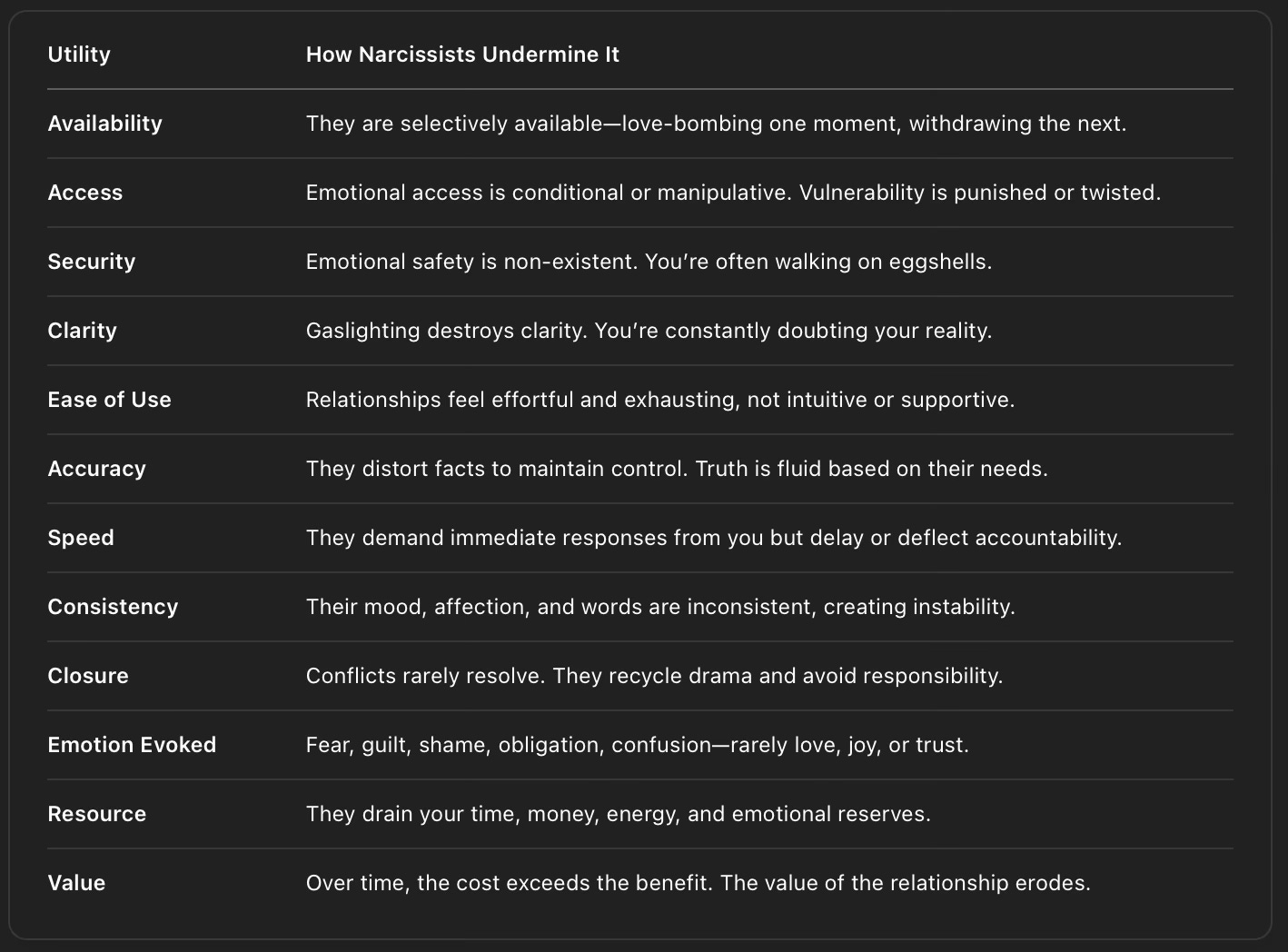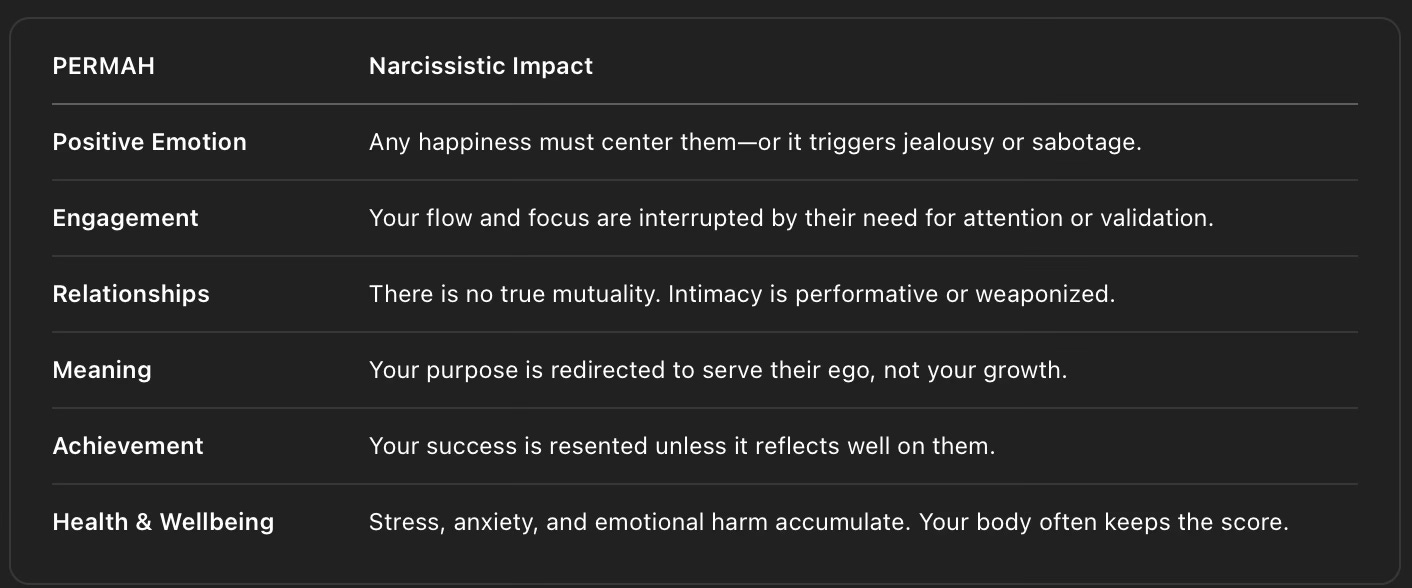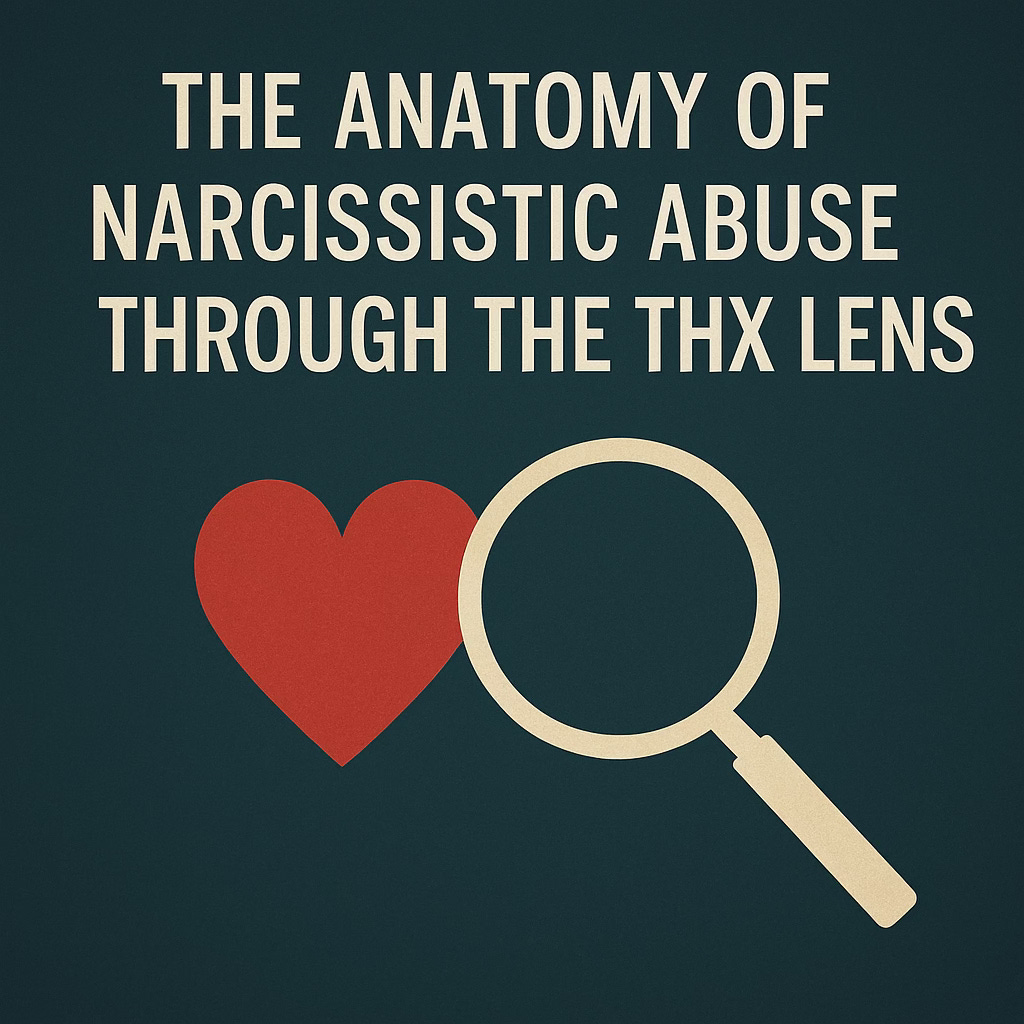Prologue - Why It Hurt So Deeply: Understanding Narcissism Through THX
From THX Series Hub: The Narcissist’s Playbook & The Life After
How Narcissistic Behaviors Violate the 12 Utilities, Undermine Flourishing, and Twist Admiration
Author’s Note: This post contains descriptions of emotional, physical, and psychological abuse, including medical trauma, coercive control, and threats. Please take care as you read.
Narcissistic abuse is often hard to name—but harder still to explain. Survivors are left trying to articulate why it hurt so deeply, why they feel so hollowed out, and why even after leaving, the confusion lingers. This post uses the THX Framework—The 12 Utilities, PERMAH, and the Admiration Equation—to map the anatomy of narcissistic abuse. Not to diagnose, but to decode. Not to blame, but to understand. These frameworks help make visible the invisible damage—showing how narcissistic patterns systematically strip away safety, clarity, self-worth, and trust.
Narcissism and the 12 Utilities
The 12 Utilities are how people measure the usefulness of an experience. Narcissists often create experiences that appear high-utility on the surface but fail underneath, especially in these ways:
PERMAH: Why It Doesn’t Happen in Narcissistic Relationships
PERMAH describes human flourishing—something narcissists often block in others because they perceive your flourishing as a threat to their control.
Prospect Theory: Why It’s So Hard to Leave
Prospect Theory shows us that losses feel more powerful than gains—especially losses of identity, family, or familiarity.
Narcissists exploit this:
They offer intermittent validation, creating hope—just enough to keep you in.
They trigger fear of loss (“No one else would love you,” “You’re ruining this”) to anchor your reference point at their approval.
Even if the relationship is destructive, the uncertainty of change feels worse than the certainty of harm—a classic loss aversion trap.
Admiration Equation: What They Can’t Sustain
The Admiration Equation says we admire others when they demonstrate skill, goodness, awe, and gratitude.
Narcissists may mimic skill and occasionally evoke awe, but they almost always fail at:
Deeper Insight: Motivation and Failure
What Drives Narcissists?
A deep fear of worthlessness.
A need for external validation to patch a fragile sense of self.
Envy of others’ authenticity, intimacy, and joy.
A belief that control = safety.
Where Do They Fail in Human Experience?
They cannot co-create micro-moments of trust, awe, or real connection.
They cannot foster flourishing, because your independence triggers their insecurity.
They reject mutual transformation, preferring control over connection.
Healing Through the THX Lens
Your journey out of narcissistic environments is not just escape. It is transformation.
Each time you:
set a boundary,
reclaim your agency,
experience authentic connection,
or delight in a peaceful moment…
…you are rebuilding the full PERMAH experience.
You are shifting from low-utility, identity-erasing relationships to high-utility, admiration-worthy, awe-filled experiences of self.
If you’ve been trying to make sense of what happened to you—if you’ve felt the ache of betrayal without words to explain it—this framework is here to offer language, validation, and structure. Narcissistic behavior often follows a predictable playbook, and the THX model helps us see how it breaks down human experience at every level. By naming what was violated, we create the first stepping stone toward healing. And in the next post, we’ll explore how to rebuild—using the very same frameworks to reestablish safety, meaning, joy, and identity.
Final Thought + Question for Reflection
What do you want your life to feel like—not just what you want to do or have?
This question is the opposite of the narcissistic dream list you described.
You’re already living the answer. Let’s keep building it, moment by moment.
Interpretation: A heart and magnifying glass symbolize the THX approach to making sense of emotional harm. This minimalist design reflects the clarity and courage required to examine narcissistic abuse through structured, human-centered frameworks.







